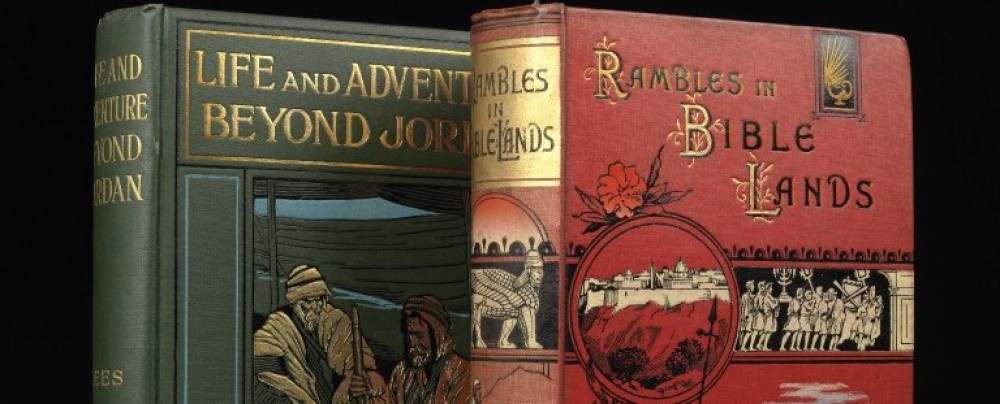The Given in Good Faith exhibition, which highlights some of New College Library’s treasures in the context of the exhibition themes of church history, worship, scripture and science is now in its final weeks at the Centre for Research Collections. If you haven’t been to see it, now is the time before it closes on 29 July!
New College Library’s collections reflect the essential place that the study of scripture has always held in the New College curriculum, as well as the study of Biblical languages to allow first hand engagement with Biblical texts. Complementing the Biblical texts are Biblical commentaries, from the Christian and the Jewish faith communities, in both printed and manuscript form. This is the first page of an illuminated Hebrew manuscript known as Rashi’s Commentary on Deuteronomy. Rashi was Rabbi Shlomo Yitzchaki (1040-1105), an acclaimed French medieval scholar, whose explanations of scriptures were valued for their precision and simplicity.
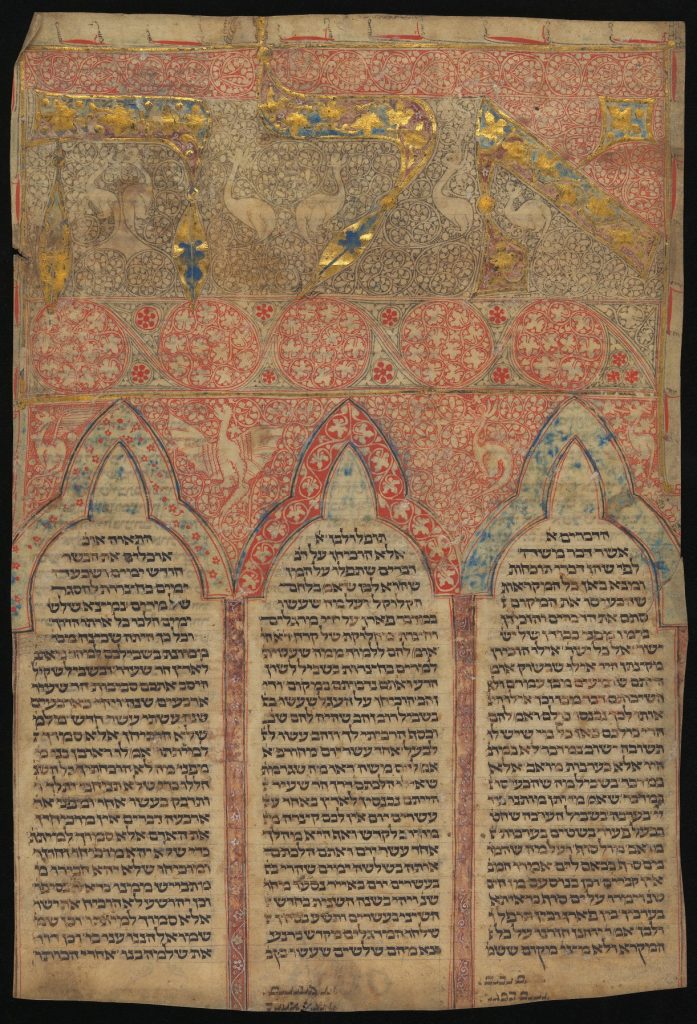
Yitzchaki, Shlomo. Commentary on Deuteronomy, undated. MS BOX 25.2
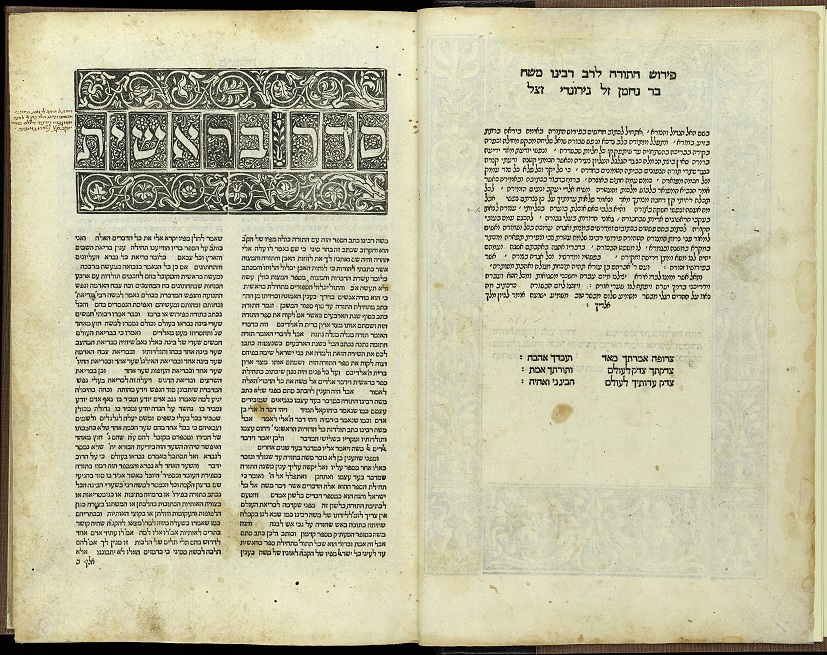
leha-Rav rabenu Mosheh bar Naḥman. Perush ha-Torah. Pisa: Bene Sontsino, 1514. Dal-Chr 15.
Published in 1514, this commentary on the first five books of the Hebrew bible is by Moses Ben Nahman or Nahmanides (1195-1270), a Spanish rabbi and leading Jewish scholar of the mediaeval period. The volume is part of the Dalman-Christie Collection, which came to New College Library in 1946 from the Church of Scotland Hospice in Jerusalem.
The Bible is at the heart of New College Library’s rare books collections, just as it was in the Scottish Reformation. This is illustrated by the rich collections of early Bibles in Latin, Greek and Hebrew and the many Bibles in a great number of languages, which have been published over the centuries.
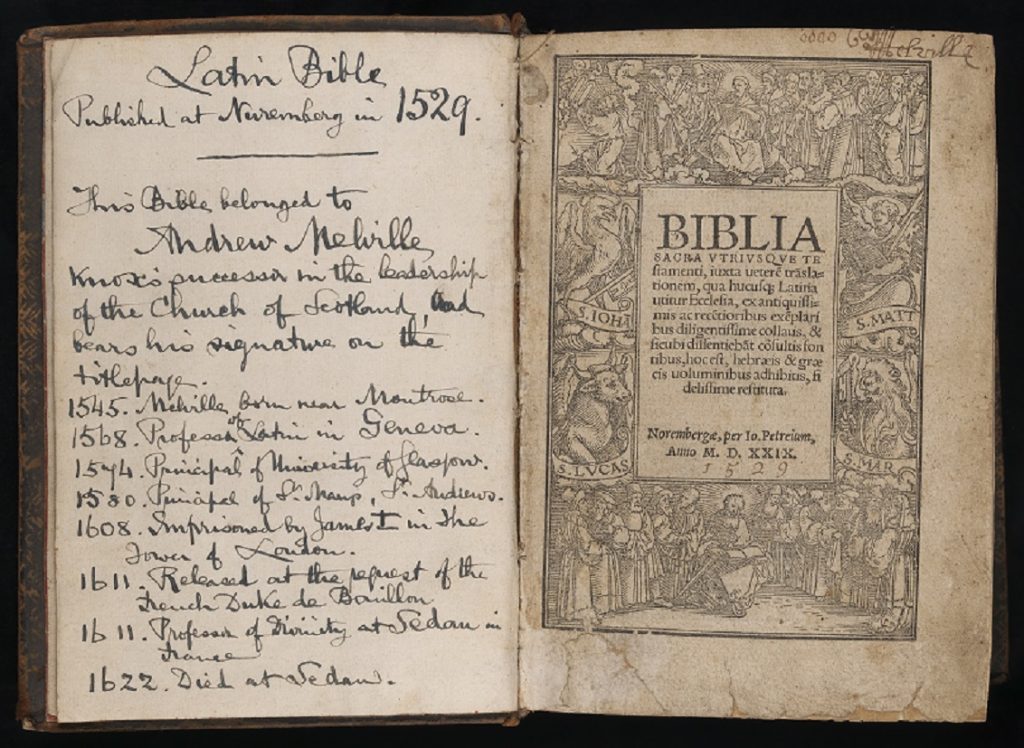
Biblia sacra utriusque Testamenti: juxta veterc̃ trãslationem. Nuremberg: Johannes Petreius, 1529. Knox 3.
This exceptional sixteenth century bible is inscribed on the title page as “A. Melville” and manuscript notes attribute it to be the bible of Andrew Melville (1514-1622). He was a biblical scholar and Rector of St Andrews University, who followed in the footsteps pf John Knox (1513-1572) as a religious reformer. This bible is part of the John Knox Collection, formerly kept at John Knox House in Edinburgh.

Calvin, Jean. Le Nouveau Testament, c’est à dire, La Nouvelle Alliance de nostre Seigneur & seul Sauveur Jesus Christ. Geneva: J. Girard, 1543. TR. 239
The Tudor rose stamped into the front cover of this book may be a clue that it was once intended as a gift for Queen Elizabeth I (1533-1603). Accompanying archival evidence proposes that William Fuller (died c. 1586), who was in exile with the English church in Geneva.
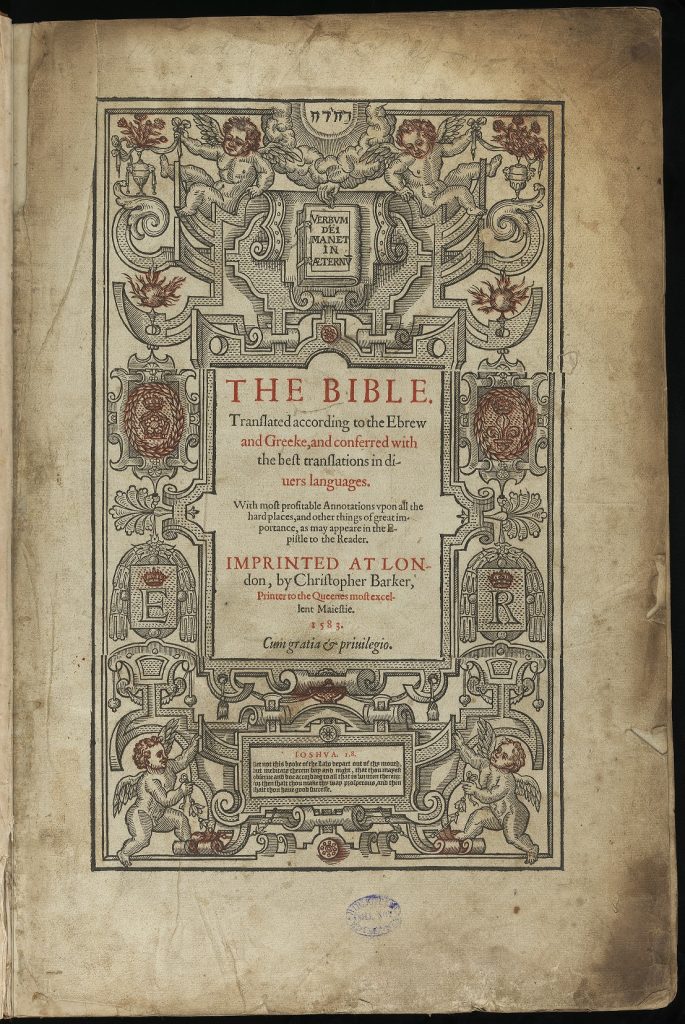
The Bible: translated according to the Ebrew and Greeke, and conferred with the best translations in diuers languages. London: Christopher Barker, 1583. B.r.33/1
This translation of the bible is known as the Geneva version and was perhaps the most widely read English bible of the Reformation era. Both John Knox (1513-1572) and Jean Calvin (1509-1564), founding figures of the Presbyterian Church, were involved in its creation which made it particularly influential in Scotland.
Christine Love-Rodgers, Academic Support Librarian – Divinity
